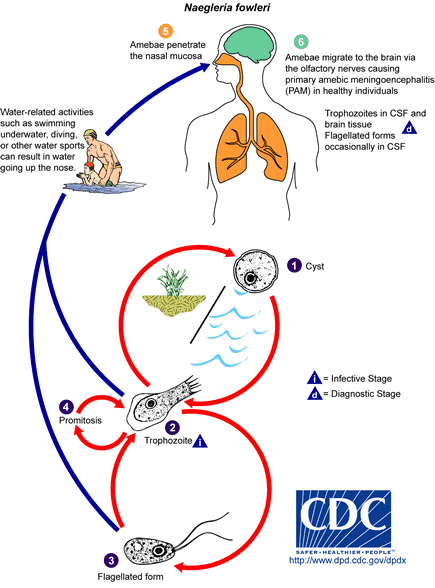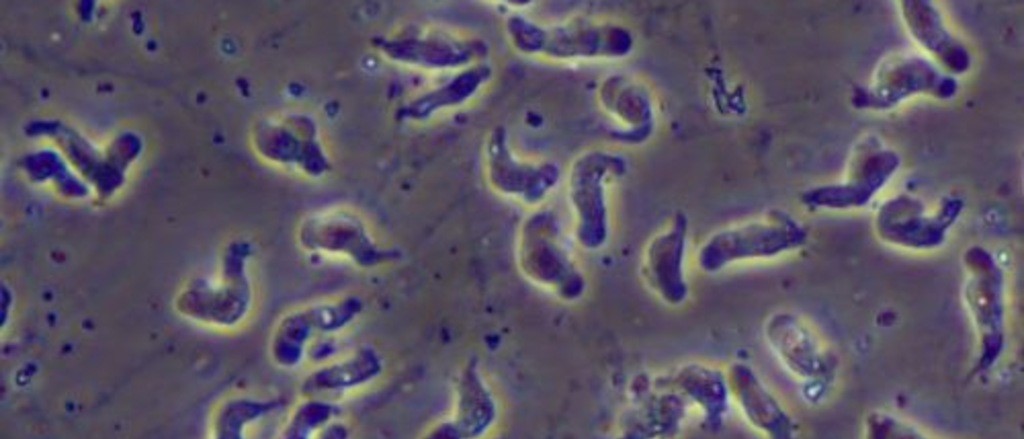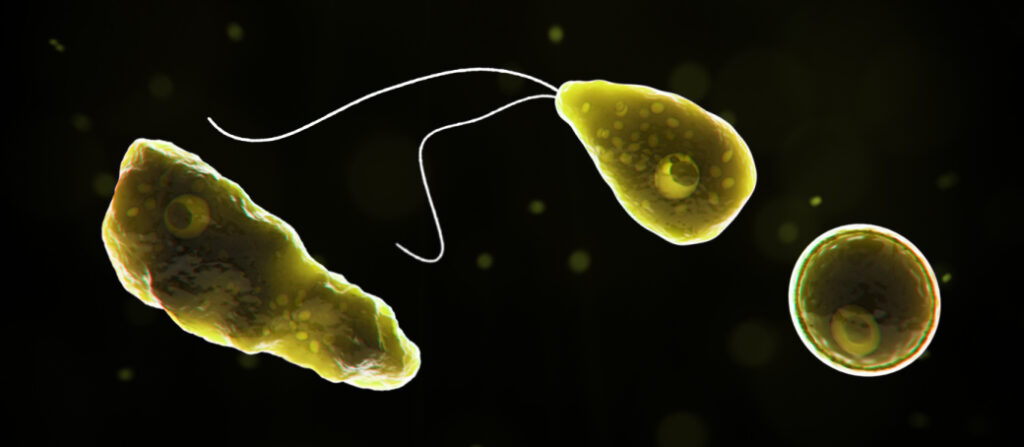

The condition referred to as primary amoebic meningoencephalitis (PAM) is brought on by Naegleria fowleri. In 98% of cases, the infection results in death. The amoeba enters the human brain through the nose while living in warm, fresh water and may do so while engaging in water-related activities or performing religious ablution. In Karachi, a significant coastal metropolis and part of Pakistan, this amoeba is a growing issue. The first PAM case was recorded in 2008, and as of October 2019, Karachi had 146 cases reported. The number of PAM cases recorded in Pakistan in only ten years outnumbered those in the USA in fifty years (142 cases between 1968 and 2019).
The majority of PAM cases in the USA were recorded in children under the age of 14, but in Pakistan, the majority of cases are documented in adults between the ages of 26 and 45, suggesting that Pakistan may have a genetically distinct strain.

Before the monsoon season and during the summer, PAM cases are most frequently reported. Scientists’ focus is now on climate change because to the spread of N fowleri in Pakistan. Due to climate change, summers are getting longer and the humidity is sticking around longer, which makes water bodies the perfect habitat for amoebas.

Only two of the documented instances of PAM in Pakistan were in people who had previously participated in recreational water activities, and all of the cases were among Muslims. As a result, it can be concluded that N fowleri is present in Karachi’s residential water supply and that ablution is a major cause of infection3. This is surprising because Karachi’s water is often salty, and amoebas cannot thrive in salt water. This data shows that either the N fowleri strain found in Pakistan is distinct from strains reported in the rest of the world or that it has evolved a resistance to saline surroundings.
Only N fowleri, one of 20 naegleria strains, is harmful to humans. Given that the etiology of N fowleri is uncertain and may involve multiple factors, a thorough understanding of its genetic origin can provide light on the cause of this severe and quickly lethal disease. The precise identification of novel paralogues of well-known genes or protein families, singletons, novel genes, and genes obtained by horizontal gene transfer would be essential for understanding the mechanism of disease caused by N fowleri. Examples of these unique contents could be found using a genomic technique that examines the entire genome of N fowleri.

With this method, an interesting research opportunity exists to clarify the genome sequence of the recently discovered resistant strain in Pakistan, which will aid in early illness detection and prevention. Additionally, there is a critical need to inform people about the value of utilizing boiled water for nose-rinsing.
We don’t declare any conflicts of interest.